Front Cover
5G NR: The Next Generation Wireless Access Technology
Copyright Page
Contents
Preface
Acknowledgments
Abbreviations and Acronyms
1 What Is 5G?
1.1 3GPP and the Standardization of Mobile Communication
1.2 The Next Generation—5G/NR
1.2.1 The 5G Use Cases
1.2.2 Evolving LTE to 5G Capability
1.2.3 NR—The New 5G Radio-Access Technology
1.2.4 5GCN—The New 5G Core Network
2 5G Standardization
2.1 Overview of Standardization and Regulation
2.2 ITU-R Activities From 3G to 5G
2.2.1 The Role of ITU-R
2.2.2 IMT-2000 and IMT-Advanced
2.2.3 IMT-2020 Process in ITU-R WP5D
2.3 5G and IMT-2020
2.3.1 Usage Scenarios for IMT-2020
2.3.2 Capabilities of IMT-2020
2.3.3 IMT-2020 Performance Requirements and Evaluation
2.4 3GPP Standardization
2.4.1 The 3GPP Process
2.4.2 Specification of 5G in 3GPP as an IMT-2020 Candidate
3 Spectrum for 5G
3.1 Spectrum for Mobile Systems
3.1.1 Spectrum Defined for IMT Systems by the ITU-R
3.1.2 Global Spectrum Situation for 5G
3.2 Frequency Bands for NR
3.3 RF Exposure Above 6GHz
4 LTE—An Overview
4.1 LTE Release 8—Basic Radio Access
4.2 LTE Evolution
4.3 Spectrum Flexibility
4.3.1 Carrier Aggregation
4.3.2 License-Assisted Access
4.4 Multi-Antenna Enhancements
4.4.1 Extended Multi-antenna Transmission
4.4.2 Multipoint Coordination and Transmission
4.4.3 Enhanced Control Channel Structure
4.5 Densification, Small Cells, and Heterogeneous Deployments
4.5.1 Relaying
4.5.2 Heterogeneous Deployments
4.5.3 Small-Cell On/Off
4.5.4 Dual Connectivity
4.5.5 Dynamic TDD
4.5.6 WLAN Interworking
4.6 Device Enhancements
4.7 New Scenarios
4.7.1 Device-To-Device Communication
4.7.2 Machine-Type Communication
4.7.3 Latency Reduction—sTTI
4.7.4 V2V and V2X
4.7.5 Aerials
5 NR Overview
5.1 Higher-Frequency Operation and Spectrum Flexibility
5.2 Ultra-Lean Design
5.3 Forward Compatibility
5.4 Transmission Scheme, Bandwidth Parts, and Frame Structure
5.5 Duplex Schemes
5.6 Low-Latency Support
5.7 Scheduling and Data Transmission
5.8 Control Channels
5.9 Beam-Centric Design and Multi-Antenna Transmission
5.10 Initial Access
5.11 Interworking and LTE Coexistence
6 Radio-Interface Architecture
6.1 Overall System Architecture
6.1.1 5G Core Network
6.1.2 Radio-Access Network
6.2 Quality-Of-Service Handling
6.3 Radio Protocol Architecture
6.4 User-Plane Protocols
6.4.1 Service Data Adaptation Protocol (SDAP)
6.4.2 Packet-Data Convergence Protocol (PDCP)
6.4.3 Radio-Link Control
6.4.4 Medium-Access Control
6.4.4.1 Logical Channels and Transport Channels
6.4.4.2 Scheduling
6.4.4.3 Hybrid ARQ With Soft Combining
6.4.5 Physical Layer
6.5 Control-Plane Protocols
6.5.1 RRC State Machine
6.5.2 Idle-State and Inactive-State Mobility
6.5.2.1 Tracking the Device
6.5.2.2 Paging Message Transmission
6.5.3 Connected-State Mobility
7 Overall Transmission Structure
7.1 Transmission Scheme
7.2 Time-Domain Structure
7.3 Frequency-Domain Structure
7.4 Bandwidth Parts
7.5 Frequency-Domain Location of NR Carriers
7.6 Carrier Aggregation
7.6.1 Control Signaling
7.7 Supplementary Uplink
7.7.1 Relation to Carrier Aggregation
7.7.2 Control Signaling
7.8 Duplex Schemes
7.8.1 Time-Division Duplex (TDD)
7.8.2 Frequency-Division Duplex (FDD)
7.8.3 Slot Format and Slot-Format Indication
7.9 Antenna Ports
7.10 Quasi-Colocation
8 Channel Sounding
8.1 Downlink Channel Sounding—CSI-RS
8.1.1 Basic CSI-RS Structure
8.1.2 Frequency-Domain Structure of CSI-RS Configurations
8.1.3 Time-Domain Property of CSI-RS Configurations
8.1.4 CSI-IM—Resources for Interference Measurements
8.1.5 Zero-Power CSI-RS
8.1.6 CSI-RS Resource Sets
8.1.7 Tracking Reference Signal (TRS)
8.1.8 Mapping to Physical Antennas
8.2 Downlink Measurements and Reporting
8.2.1 Report Quantity
8.2.2 Measurement Resource
8.2.3 Report Types
8.3 Uplink Channel Sounding—SRS
8.3.1 SRS Sequences and Zadoff–Chu Sequences
8.3.2 Multiport SRS
8.3.3 Time-Domain Structure of SRS
8.3.4 SRS Resource Sets
8.3.5 Mapping to Physical Antennas
9 Transport-Channel Processing
9.1 Overview
9.2 Channel Coding
9.2.1 CRC Attachment Per Transport Block
9.2.2 Code-Block Segmentation
9.2.3 Channel Coding
9.3 Rate Matching and Physical-Layer Hybrid-ARQ Functionality
9.4 Scrambling
9.5 Modulation
9.6 Layer Mapping
9.7 Uplink DFT Precoding
9.8 Multi-Antenna Precoding
9.8.1 Downlink Precoding
9.8.2 Uplink Precoding
9.9 Resource Mapping
9.10 Downlink Reserved Resources
9.11 Reference Signals
9.11.1 Demodulation Reference Signals for OFDM-Based Downlink and Uplink
9.11.2 Demodulation Reference Signals for DFT-Precoded OFDM Uplink
9.11.3 Phase-Tracking Reference Signals (PT-RS)
10 Physical-Layer Control Signaling
10.1 Downlink
10.1.1 Physical Downlink Control Channel
10.1.2 Control Resource Set
10.1.3 Blind Decoding and Search Spaces
10.1.4 Downlink Scheduling Assignments—DCI Formats 1–0 and 1–1
10.1.5 Uplink Scheduling Grants—DCI Formats 0–0 and 0–1
10.1.6 Slot Format Indication—DCI Format 2–0
10.1.7 Preemption Indication—DCI Format 2–1
10.1.8 Uplink Power Control Commands—DCI Format 2–2
10.1.9 SRS Control Commands—DCI Format 2–3
10.1.10 Signaling of Frequency-Domain Resources
10.1.11 Signaling of Time-Domain Resources
10.1.12 Signaling of Transport-Block Sizes
10.2 Uplink
10.2.1 Basic PUCCH Structure
10.2.2 PUCCH Format 0
10.2.3 PUCCH Format 1
10.2.4 PUCCH Format 2
10.2.5 PUCCH Format 3
10.2.6 PUCCH Format 4
10.2.7 Resources and Parameters for PUCCH Transmission
10.2.8 Uplink Control Signaling on PUSCH
11 Multi-Antenna Transmission
11.1 Introduction
11.2 Downlink Multi-Antenna Precoding
11.2.1 Type I CSI
11.2.1.1 Single-Panel CSI
11.2.1.2 Multipanel CSI
11.2.2 Type II CSI
11.3 NR Uplink Multiantenna Precoding
11.3.1 Codebook-Based Transmission
11.3.2 Non-codebook-Based Precoding
12 Beam Management
12.1 Initial Beam Establishment
12.2 Beam Adjustment
12.2.1 Downlink Transmitter-Side Beam Adjustment
12.2.2 Downlink Receiver-Side Beam Adjustment
12.2.3 Uplink Beam Adjustment
12.2.4 Beam Indication and TCI
12.3 Beam Recovery
12.3.1 Beam-Failure Detection
12.3.2 New-Candidate-Beam Identification
12.3.3 Device Recovery Request and Network Response
13 Retransmission Protocols
13.1 Hybrid-ARQ With Soft Combining
13.1.1 Soft Combining
13.1.2 Downlink Hybrid-ARQ
13.1.3 Uplink Hybrid-ARQ
13.1.4 Timing of Uplink Acknowledgments
13.1.5 Multiplexing of Hybrid-ARQ Acknowledgments
13.2 RLC
13.2.1 Sequence Numbering and Segmentation
13.2.2 Acknowledged Mode and RLC Retransmissions
13.3 PDCP
14 Scheduling
14.1 Dynamic Downlink Scheduling
14.1.1 Bandwidth Adaptation
14.1.2 Downlink Preemption Handling
14.2 Dynamic Uplink Scheduling
14.2.1 Uplink Priority Handling
14.2.2 Scheduling Request
14.2.3 Buffer Status Reports
14.2.4 Power Headroom Reports
14.3 Scheduling and Dynamic TDD
14.4 Transmission Without a Dynamic Grant
14.5 Discontinuous Reception
15 Uplink Power and Timing Control
15.1 Uplink Power Control
15.1.1 Baseline Power Control
15.1.2 Beam-Based Power Control
15.1.2.1 Multiple Path-Loss-Estimation Processes
15.1.2.2 Multiple Open-Loop-Parameter Sets
15.1.2.3 Multiple Closed-Loop Processes
15.1.3 Power Control for PUCCH
15.1.4 Power Control in the Case of Multiple Uplink Carriers
15.2 Uplink Timing Control
16 Initial Access
16.1 Cell Search
16.1.1 The SS Block
16.1.2 Frequency-Domain Position of SS Block
16.1.3 SS Block Periodicity
16.1.4 SS Burst Set: Multiple SS Blocks in the Time Domain
16.1.5 Details of PSS, SSS, and PBCH
16.1.5.1 The Primary Synchronization Sequence (PSS)
16.1.5.2 The Secondary Synchronization Sequence (SSS)
16.1.5.3 PBCH
16.1.6 Providing Remaining System Information
16.2 Random Access
16.2.1 Preamble Transmission
16.2.1.1 Characteristics of Preamble Transmission
16.2.1.2 RACH Resources
16.2.1.3 Basic Preamble Structure
16.2.1.4 Long vs Short Preambles
16.2.1.5 Beam Establishment During Initial Access
16.2.1.6 Preamble Power Control and Power Ramping
16.2.2 Random-Access Response
16.2.3 Message 3: Contention Resolution
16.2.4 Message 4: Contention Resolution and Connection Set Up
16.2.5 Random Access for Supplementary Uplink
17 LTE/NR Interworking and Coexistence
17.1 LTE/NR Dual-Connectivity
17.1.1 Deployment Scenarios
17.1.2 Architecture Options
17.1.3 Single-TX Operation
17.2 LTE/NR Coexistence
18 RF Characteristics
18.1 Spectrum Flexibility Implications
18.2 RF Requirements in Different Frequency Ranges
18.3 Channel Bandwidth and Spectrum Utilization
18.4 Overall Structure of Device RF Requirements
18.5 Overall Structure of Base-Station RF Requirements
18.5.1 Conducted and Radiated RF Requirements for NR BS
18.5.2 BS Types in Different Frequency Ranges for NR
18.6 Overview of Conducted RF Requirements for NR
18.6.1 Conducted Transmitter Characteristics
18.6.2 Conducted Receiver Characteristics
18.6.3 Regional Requirements
18.6.4 Band-Specific Device Requirements Through Network Signaling
18.6.5 Base-Station Classes
18.7 Conducted Output Power Level Requirements
18.7.1 Base-Station Output Power and Dynamic Range
18.7.2 Device Output Power and Dynamic Range
18.8 Transmitted Signal Quality
18.8.1 EVM and Frequency Error
18.8.2 Device In-Band Emissions
18.8.3 Base-Station Time Alignment
18.9 Conducted Unwanted Emissions Requirements
18.9.1 Implementation Aspects
18.9.2 Emission Mask in the OOB Domain
18.9.2.1 Base-Station Operating Band Unwanted Emission Limits
18.9.2.2 Device Spectrum Emission Mask
18.9.3 Adjacent Channel Leakage Ratio
18.9.4 Spurious Emissions
18.9.5 Occupied Bandwidth
18.9.6 Transmitter Intermodulation
18.10 Conducted Sensitivity and Dynamic Range
18.11 Receiver Susceptibility to Interfering Signals
18.12 Radiated RF Requirements for NR
18.12.1 Radiated Device Requirements in FR2
18.12.2 Radiated Base-Station Requirements in FR1
18.12.3 Radiated Base-Station Requirements in FR2
18.13 Ongoing Developments of RF Requirements for NR
18.13.1 Multistandard Radio Base Stations
18.13.2 Multiband-Capable Base Stations
18.13.3 Operation in Non-contiguous Spectrum
19 RF Technologies at mm-Wave Frequencies
19.1 ADC and DAC Considerations
19.2 LO Generation and Phase Noise Aspects
19.2.1 Phase Noise Characteristics of Free-Running Oscillators and PLLs
19.2.2 Challenges With mm-Wave Signal Generation
19.3 Power Amplifier Efficiency in Relation to Unwanted Emission
19.4 Filtering Aspects
19.4.1 Possibilities of Filtering at the Analog Front-End
19.4.2 Insertion Loss (IL) and Bandwidth
19.4.3 Filter Implementation Examples
19.4.3.1 PCB Integrated Implementation Example
19.4.3.2 LTCC Filter Implementation Example
19.5 Receiver Noise Figure, Dynamic Range, and Bandwidth Dependencies
19.5.1 Receiver and Noise Figure Model
19.5.2 Noise Factor and Noise Floor
19.5.3 Compression Point and Gain
19.5.4 Power Spectral Density and Dynamic Range
19.5.5 Carrier Frequency and mm-Wave Technology Aspects
19.6 Summary
20 Beyond the First Release of 5G
20.1 Integrated Access-Backhaul
20.2 Operation in Unlicensed Spectra
20.3 Non-orthogonal Multiple Access
20.4 Machine-Type Communication
20.5 Device-To-Device Communication
20.6 Spectrum and Duplex Flexibility
20.7 Concluding Remarks
References
Index
Back Cover
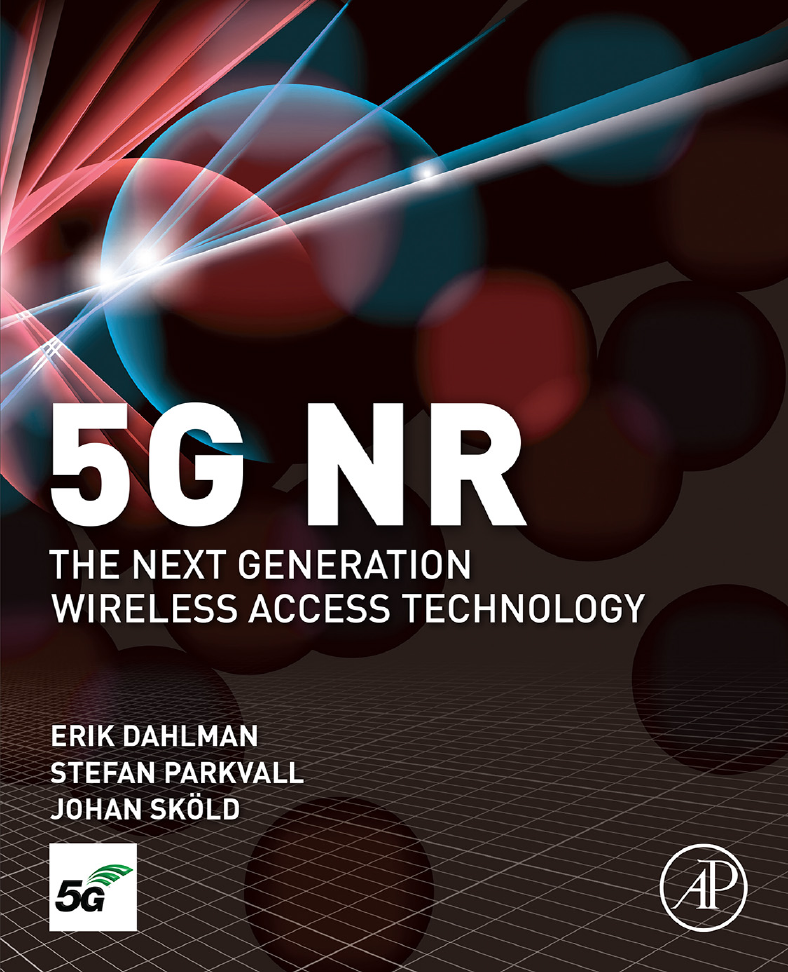
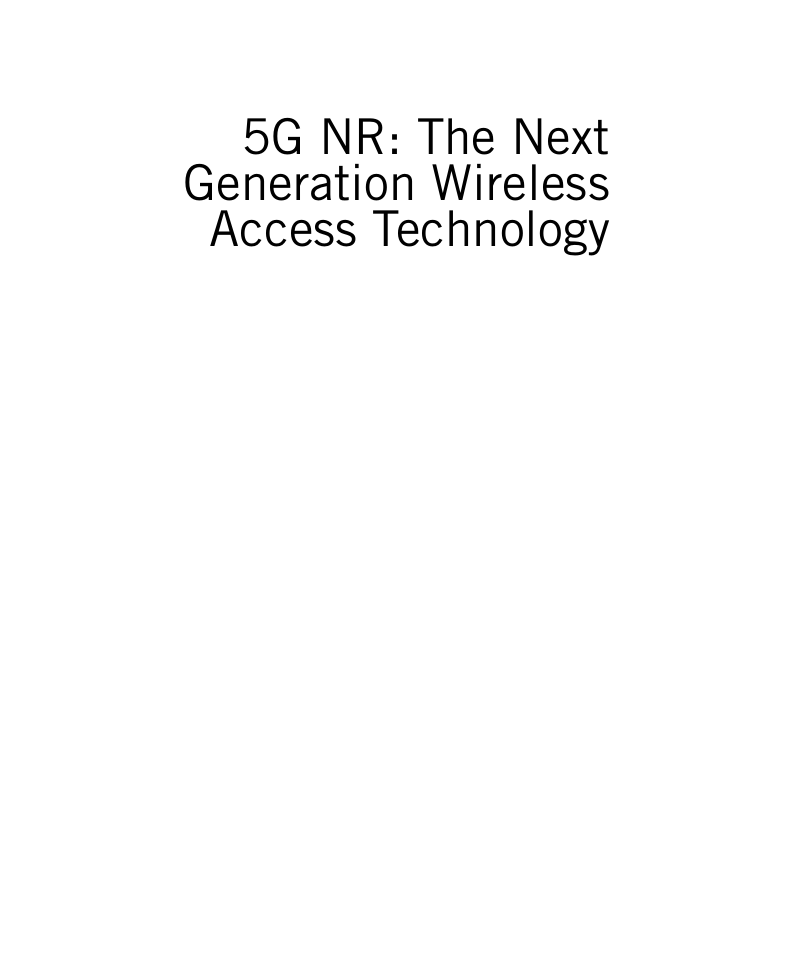


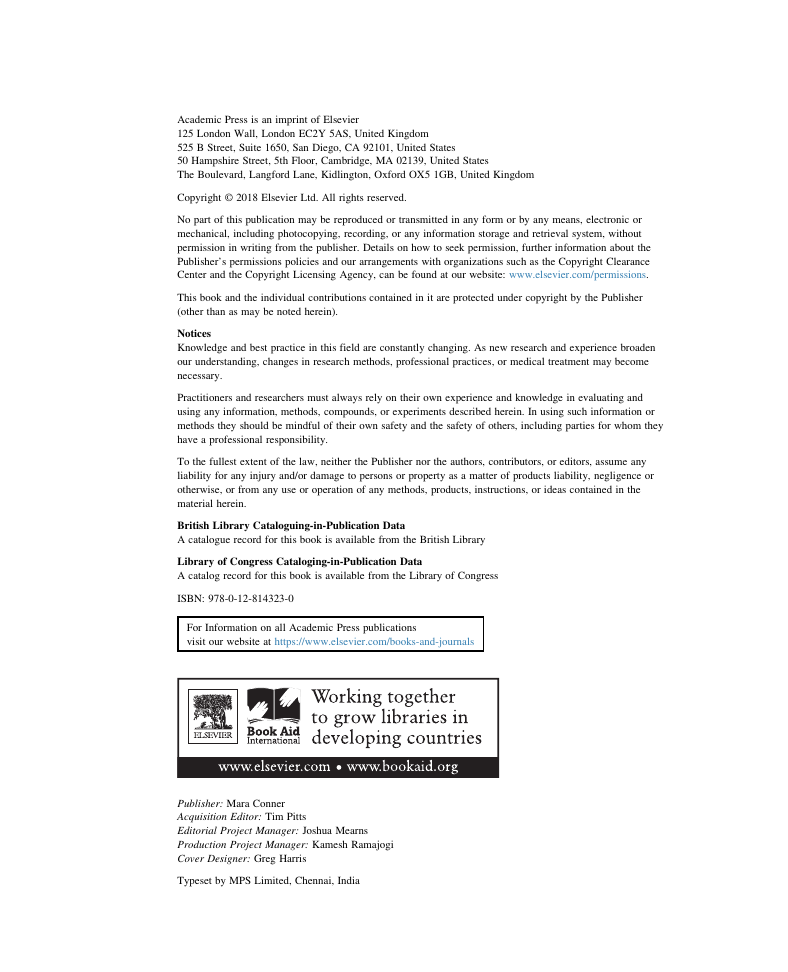
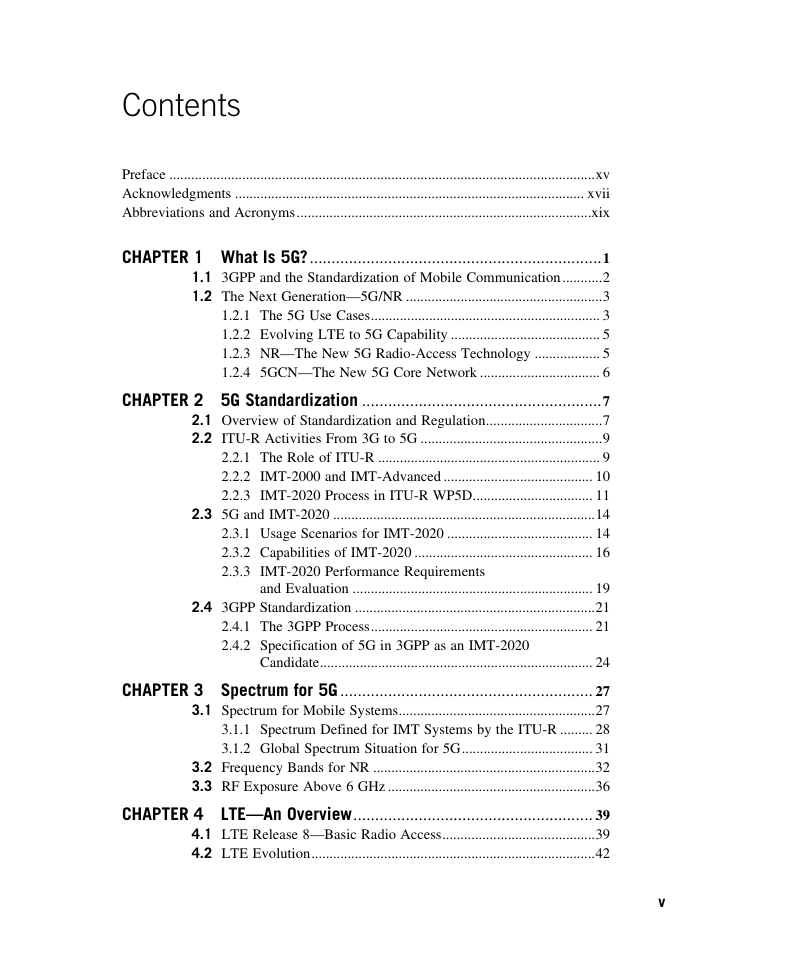

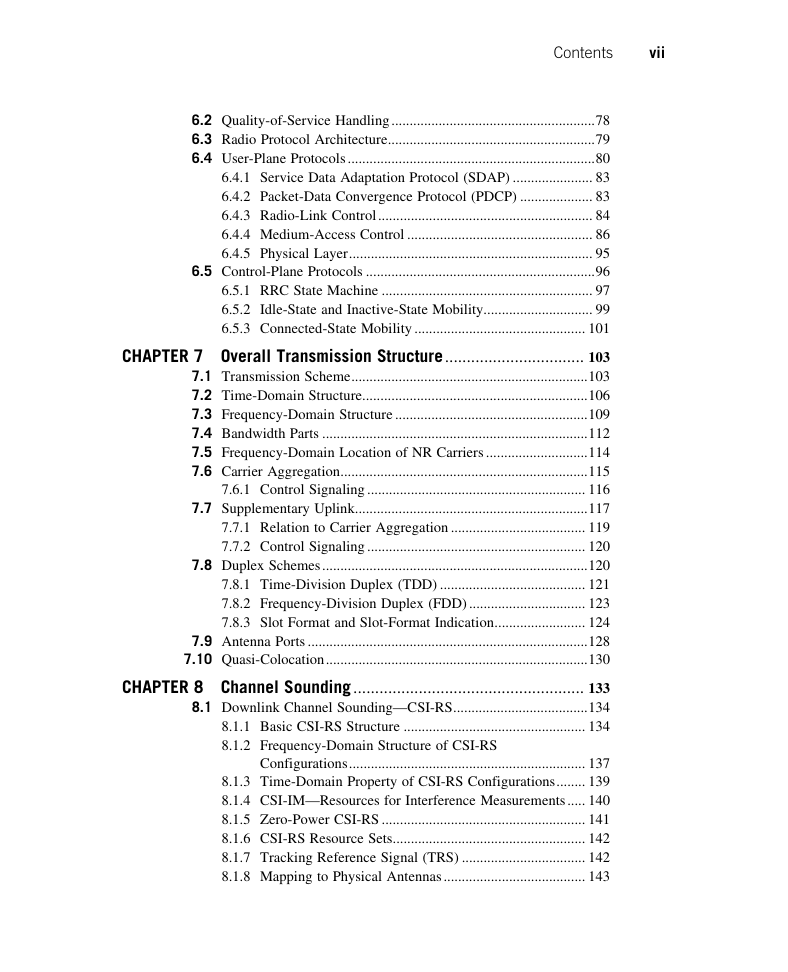








 2023年江西萍乡中考道德与法治真题及答案.doc
2023年江西萍乡中考道德与法治真题及答案.doc 2012年重庆南川中考生物真题及答案.doc
2012年重庆南川中考生物真题及答案.doc 2013年江西师范大学地理学综合及文艺理论基础考研真题.doc
2013年江西师范大学地理学综合及文艺理论基础考研真题.doc 2020年四川甘孜小升初语文真题及答案I卷.doc
2020年四川甘孜小升初语文真题及答案I卷.doc 2020年注册岩土工程师专业基础考试真题及答案.doc
2020年注册岩土工程师专业基础考试真题及答案.doc 2023-2024学年福建省厦门市九年级上学期数学月考试题及答案.doc
2023-2024学年福建省厦门市九年级上学期数学月考试题及答案.doc 2021-2022学年辽宁省沈阳市大东区九年级上学期语文期末试题及答案.doc
2021-2022学年辽宁省沈阳市大东区九年级上学期语文期末试题及答案.doc 2022-2023学年北京东城区初三第一学期物理期末试卷及答案.doc
2022-2023学年北京东城区初三第一学期物理期末试卷及答案.doc 2018上半年江西教师资格初中地理学科知识与教学能力真题及答案.doc
2018上半年江西教师资格初中地理学科知识与教学能力真题及答案.doc 2012年河北国家公务员申论考试真题及答案-省级.doc
2012年河北国家公务员申论考试真题及答案-省级.doc 2020-2021学年江苏省扬州市江都区邵樊片九年级上学期数学第一次质量检测试题及答案.doc
2020-2021学年江苏省扬州市江都区邵樊片九年级上学期数学第一次质量检测试题及答案.doc 2022下半年黑龙江教师资格证中学综合素质真题及答案.doc
2022下半年黑龙江教师资格证中学综合素质真题及答案.doc